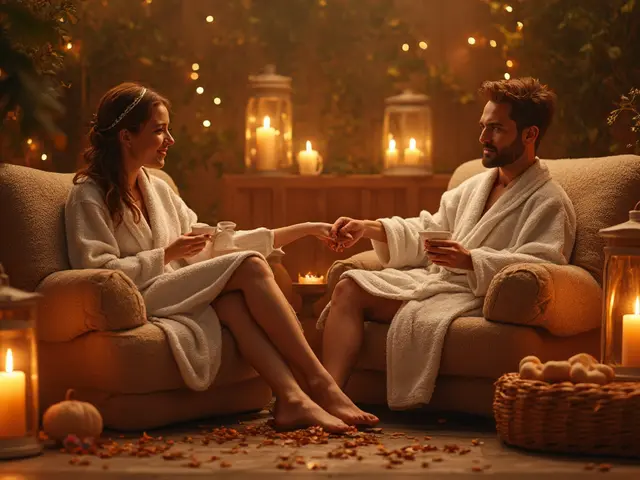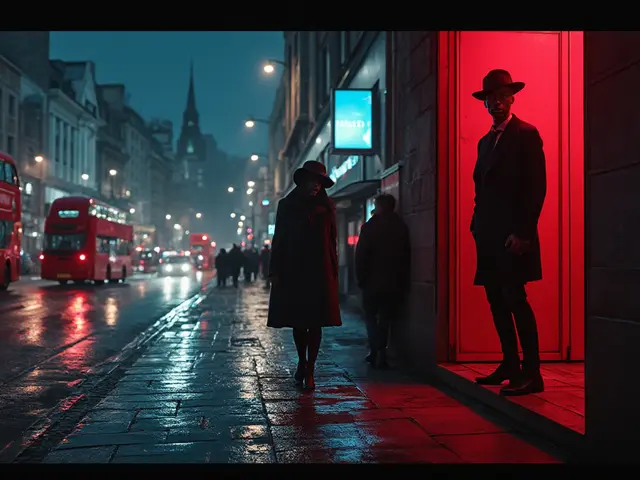If you’ve ever walked through central London—especially near Green Park or St James’s Park—you know how Buckingham Palace pulls in crowds year-round. But for Londoners, it’s more than just a spot for waving to royal guards. The mix of tourists, city workers, and residents heading past Victoria Memorial or cutting through The Mall gives this landmark a real London buzz you won’t find in guidebooks.
People don’t just stop to snap a selfie. Locals use the palace as an easy meeting point, especially if you’re catching the Tube nearby at Green Park or Victoria. When big royal events happen—think Trooping the Colour or a rare balcony appearance—you’ll see London’s character on full display, with everything from branded bunting at Tesco to pop-up merch stands popping up on street corners. If you work in Westminster, you’ve probably lost count of times you’ve been asked for directions by someone clutching a London A-Z with the palace circled.
- London’s Royal Backdrop: Buckingham’s Beginnings
- Traditions and Ceremonies: The Palace in Daily London Life
- Visiting Tips: What Locals and Savvy Visitors Know
- Stories Behind the Gates: Hidden Facts and Urban Legends
London’s Royal Backdrop: Buckingham’s Beginnings
When you see Buckingham Palace now, it looks like it’s been there forever as the beating royal heart of London. But it didn’t start out as the grand home of the British Royal Family. The spot was once a mulberry garden set up by James I in hopes of kickstarting a homegrown silk industry (which didn’t exactly work out, since he bought the wrong kind of mulberry trees).
Fast forward to 1703, and the site got its first major building: Buckingham House. This was built for John Sheffield, the Duke of Buckingham—not royalty. It was only much later, in 1761, that King George III snapped it up as a family home for Queen Charlotte. Back then, it wasn’t even considered the “official” palace. The action was at St James’s Palace, just up the road. The shift to making Buckingham Palace the main royal digs only happened after George IV got involved. He needed a London base that could show off royal power and style, so in the 1820s, the house was transformed into a full-on palace.
Lots of locals and tourists don’t know it, but Buckingham Palace still stands on that same footprint from three centuries ago. The original core of the old house is now part of the main palace structure. What’s wild is that the palace isn’t even privately owned by the King—it belongs to the nation. This can get confusing when the tabloids start talking about royal estates being �sold off,� but the palace itself is off-limits for any home movers.
| Key Dates in Buckingham Palace History | What Happened |
|---|---|
| 1703 | Buckingham House built for the Duke of Buckingham |
| 1761 | King George III buys the house for his wife, Queen Charlotte |
| 1837 | Queen Victoria makes it the official London residence |
One thing to keep in mind if you’re living in London: all those iconic balcony scenes and wave-from-the-gate traditions are fairly recent. Queen Victoria was actually the first monarch to call it her official London home. Before the mid-1800s, the main royal buzz was over at St James’s Palace, which you can still peek at during a walk down Pall Mall.
Traditions and Ceremonies: The Palace in Daily London Life
Ask anyone in London about a classic Buckingham Palace moment, and you’ll hear about the Changing of the Guard. It’s not just for tourists—locals still get a kick out of the stomping boots, brass band belting out pop tunes, and the guards in their bright red coats and furry hats. It usually happens around 11 a.m., mostly on Mondays, Wednesdays, Fridays, and Sundays, but on busy weeks (like in June), they’ll do it daily. Double-check schedules on the British Army website—nothing’s worse than standing out in the drizzle for nothing.
Another big deal in London’s calendar is Trooping the Colour. This one marks the official birthday of the monarch and sees the city turn into one big street party. If you live nearby, expect The Mall (the wide road running up to the Palace) to be rammed with flag-waving crowds. You’ll see crowds outside Buckingham Palace hoping for a glimpse of the Royal Family on the balcony, every June. For most Londoners, it’s a good excuse to host a barbecue or just soak in the buzz around St James's Park.
Don’t forget those random royal events—weddings, jubilees, or even big announcements. You’ll know something’s up when you see Union Jacks popping up in Sainsbury’s or local pubs pulling out special “Royal Pints.” Even black cabs sometimes put up mini flags in support.
- Changing of the Guard: 11 a.m. (check schedule)
- Trooping the Colour: Second Saturday in June
- Other events: Times vary, but traffic and packed Tube stations give them away
For locals, the palace can be a challenge—road closures and security make commutes longer, especially if you work in Westminster. But just as often, these traditions are a reason to pause, snap a picture, and share a sense of city pride. If you’re in London, these routines make up the heartbeat of daily life more than most realise.
Visiting Tips: What Locals and Savvy Visitors Know
If you’re thinking about checking out Buckingham Palace, don’t fall for the usual first-timer mistakes. There’s a real difference between winging it and visiting like someone who knows London inside out.
The main public tours of the State Rooms run in summer, usually from late July to late September. That’s when you can actually go inside. The rest of the year, you’re limited to the Queen’s Gallery and the Royal Mews, both of which are worth it if you enjoy art or want to see royal carriages up close. Book tickets early—weekends and midday slots go fast, especially during school holidays.
For the famous Changing of the Guard, skip the crowd jammed in front of the gates. Locals get better views along Spur Road or at the Victoria Memorial. Check the schedule in advance: it’s not every day, usually Mondays, Wednesdays, Fridays, and Sundays at 11:00 am, but it can move for big events or bad weather.
Many overlook the Green Park and St James’s Park side entrances. They’re less crowded, and St James’s Park itself can be a peaceful place to have lunch or just people-watch after your palace visit. Grab a sandwich from Pret or Leon on Piccadilly and you’ll fit right in with Londoners on their lunch break.
- For quickest access, take the Tube to Green Park station—don’t bother with taxis, traffic near the palace is a nightmare when events are on.
- If you want palace photos without the crowds, show up before 9:00 am, or swing by after 6:00 pm in summer, after most tours have wrapped up.
- Don’t forget the palace shop if you’re hunting for quality souvenirs—way better than what you’ll find at generic stands nearby.
- Watch out for road closures on The Mall and Constitution Hill when there’s a big event; TfL’s Twitter is usually updated with info.
| Entrance | Closest Tube | Best Time to Arrive |
|---|---|---|
| Green Park | Green Park Station | Before 9:00 am |
| St James's Park | St James’s Park Station | After 6:00 pm (summer) |
| Main Gates (Victoria Memorial) | Victoria Station | 11:00 am (for Changing of the Guard, arrive 30 mins early) |
Local tip: If you see barriers and extra police, that usually means something special is happening—a royal in residence, a visiting dignitary, or an event. These days, even Londoners take a peek in case something historic’s about to go down.
Stories Behind the Gates: Hidden Facts and Urban Legends
If you live in London, you’ve probably heard your fair share of Buckingham Palace theories, not just from tour guides but even that mate who swears his uncle’s mate worked in the kitchens. Some of these stories are true—or at least partly true—while others have grown legs over time. Here’s what really goes on behind those famous gates.
Let’s start with the Queen’s famous “secret tunnel” story. Is there really a secret passage from Buckingham Palace to nearby Tube stations? The short answer: sort of. There’s a well-documented tunnel from the palace to Clarence House, and while there aren’t official connections to Green Park station, some royal staff reckon you can get pretty far under the streets of Westminster along old war tunnels built during WWII.
Ever heard about the palace being full of clocks? That one’s bang on. More than 350 clocks and watches tick away inside. There’s actually a full-time horologist—yep, that’s someone paid just to wind and fix the palace’s timepieces. Londoners who’ve done tours during the summer open months have sometimes spotted the horologist darting from room to room.
- In 1982, Michael Fagan managed to scale the palace walls and famously strolled into the Queen's bedroom. Security was, to put it mildly, reviewed after that.
- During WWII, a bomb hit the palace courtyard. The Royal Family insisted on staying put to show solidarity with Londoners, which won them a lot of local respect.
- The palace is home to the largest private garden in London. Locals who attend the annual summer garden parties will tell you it’s full of hidden nooks and a clutch of cheeky foxes that sneak in from Green Park.
Then there’s the rumour about the palace’s own post office, cinema, and police station. All true. Buckingham Palace runs like its own little town—handy if you hate queuing at the Post Office on Victoria Street. A table breaking down just a few of these 'hidden' features:
| Feature | Description |
|---|---|
| Post Office | Royal Mail post office, mainly for staff and official palace business |
| Cinema | Small cinema used by the royal family and staff |
| Doctor’s Surgery | On-site medical care for royals and staff |
| Police Station | Dedicated Metropolitan Police team based inside |
No matter how many wild tales you hear at your local—like secret tunnels leading to every pub in Westminster—these facts show just how much of a living, breathing part of London and British life the palace really is. The mix of true stories and tall tales gives Buckingham Palace its unique London flavour.




